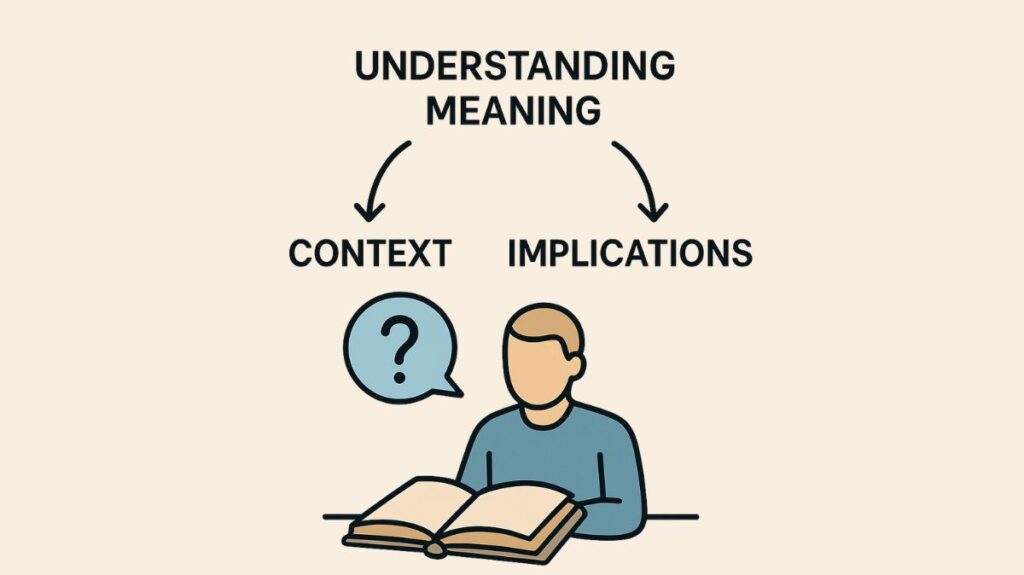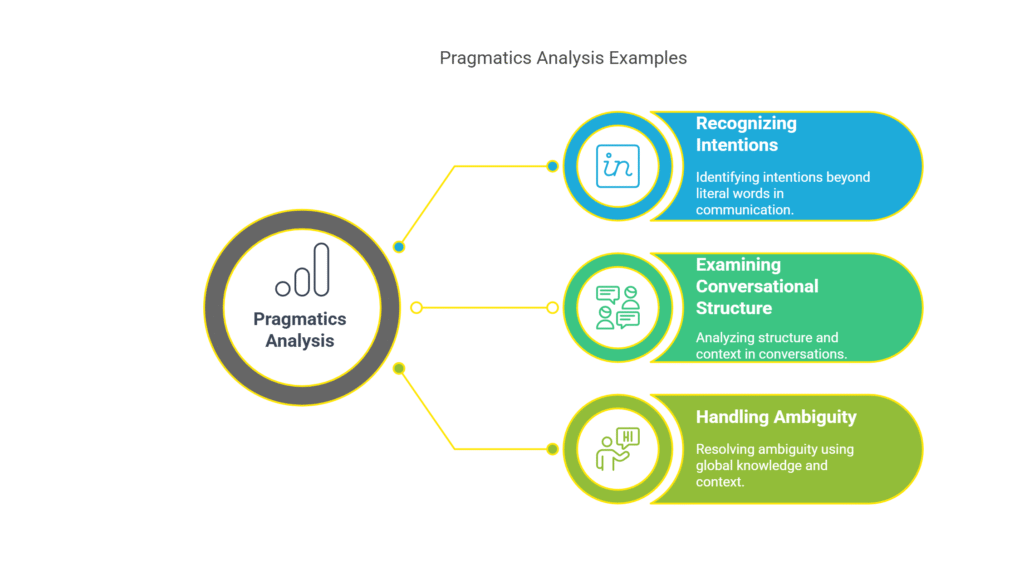Pragmatics is often seen as a separate step of language analysis in Natural Language Processing (NLP), usually coming after syntactic and semantic analysis in the processing pipeline. Pragmatics is concerned with interpreting an utterance or text in its context, whereas syntax deals with the structure of sentences and semantics with their literal meaning.
What is pragmatic analysis in NLP?

Reinterpreting what was stated in order to determine its true meaning is known as pragmatic analysis. Deriving those linguistic elements that call for practical knowledge is necessary. Pragmatic analysis, for example, can make clear the intended meaning of phrases like “open the door” or “Manhattan calls out to Dave” by interpreting them as requests rather than orders. The goal is to apply the rules that define cooperative dialogues in order to find intended effects.
While syntax and semantics are usually thought of as concentrating on sentential issues, pragmatics is frequently linked to conversation. A component of pragmatics is discourse analysis. This involves being aware of how sentences in related texts relate to one another.
Because their resolution is limited by world knowledge, phenomena like anaphoric relations in which pronouns or other expressions refer back to previously specified entities are pragmatic. Hurricanes are catastrophes, for instance, therefore knowing that “the disaster” in a text relates to “Hurricane Hugo” is necessary. As cue phrases, explicit phrases like “because” and “and then” might indicate discourse or rhetorical linkages between sentences, like narrative or explanation.
Pragmatics Analysis Features
The field of pragmatics also encompasses other features of language:
Multiword expressions (MWEs) that are connected to a particular context or a set of circumstances are referred to as pragmatic idiomaticity. Commands like “all aboard,” which are associated with departure circumstances at train stations or docks, or welcomes like “good morning,” which are associated with mornings, are examples. With their literal translations that are not placed, these pragmatic MWEs may be unclear.
Pragmatic, emotive, or conversation-interactional meanings can be expressed through prosody, the intonational and rhythmic components of language.
When it comes to Natural Language Generation (NLG), the output text is planned with pragmatic concerns in mind. Generally speaking, pragmatics more especially, goal selection occurs early in the generating process. Selecting speech acts and figuring out situation-specific viewpoints are both part of macro-planning. Fine-grained tasks like choosing pronouns and managing information structure are part of micro-planning, which is also impacted by pragmatic considerations.
Additionally, pragmatic ideas like wanting the generator to “use high style” or “be brief” can be gradually transformed into characteristics that affect word choice, sentence length, or clause complexity in personality-sensitive generation systems. By emphasizing the communication possibilities and goals a text might serve, a functional perspective adopted in systems such as Systemic Grammar aligns with pragmatic considerations and serves as a foundation for choosing linguistic elements.
Pragmatics Analysis Examples

Here is a summary of Natural Language Processing pragmatics along with several examples:
Recognizing Intentions That Go Beyond Literal Meaning:
“Could you pass the salt?” The pragmatic meaning is a request for the salt to be passed, whereas the literal meaning asks about the ability to pass salt.
Example:
“Raining cats and dogs.” The pragmatic sense is that it’s pouring a lot, but the literal interpretation is absurd.
Example:
“I’m hungry.” This means hunger, but it could also be a request for food, a reason to be irritated, or a reason to delay a meeting.
Examining Conversational Structure and Context:
Example:
“Can you pull the car over?” This refers to stopping the vehicle rather than physically dragging it in a traffic situation.
Deixis:
Speaking of “here,” “now,” or “this” necessitates knowing the speaker’s location and the time of day. For instance, “This is a great movie” need context in order to be completely comprehended.
Handling Ambiguity and Applying Global Knowledge:
“John saw Mary in a garden with a cat.” It is possible to interpret the phrase “with a cat” as modifying either Mary or John. It is important for pragmatic analysis to recognise that Mary may not be with the cat whereas John may be.
Example:
“Pruning a tree is a long process.” Either physically pruning a tree or chopping down a computer science algorithm could be the subject of this phrase.
Pragmatic analysis challenges
The difficulties in reaching a thorough and profound pragmatic grasp of NLP systems. It is challenging to realize genuinely broad-coverage pragmatic analysis. Among the noteworthy challenges mentioned are:
- The challenge of utilising statistical techniques to model the complexity of world knowledge. This outside information is crucial to pragmatic understanding.
- Inadequate training data in many pragmatics domains.
- It is said to be impossible for more than a few domains to manually code the enormous amount of world information required for resolving potential ambiguities in natural language for deep understanding. In a half-joking way, this endeavor is frequently called “AI-complete,” suggesting that it would necessitate resolving the full problem of world representation and knowledge acquisition.
You can also read on What Are the Components Of NLP Natural Language Processing
- In Statistical NLP, the majority of pragmatics topics have gotten less attention than others. A thorough, in-depth pragmatic study throughout the entire spectrum of language use is still extremely difficult to achieve because of these constraints, even though some areas, such as the resolution of anaphoric relations and the modelling of speech acts in dialogues, are beginning to receive increasing attention. Sometimes, building systems methodologies are “underspecified” in terms of how to deal with intricate modelling problems, which might affect the fine-grained level of analysis.
